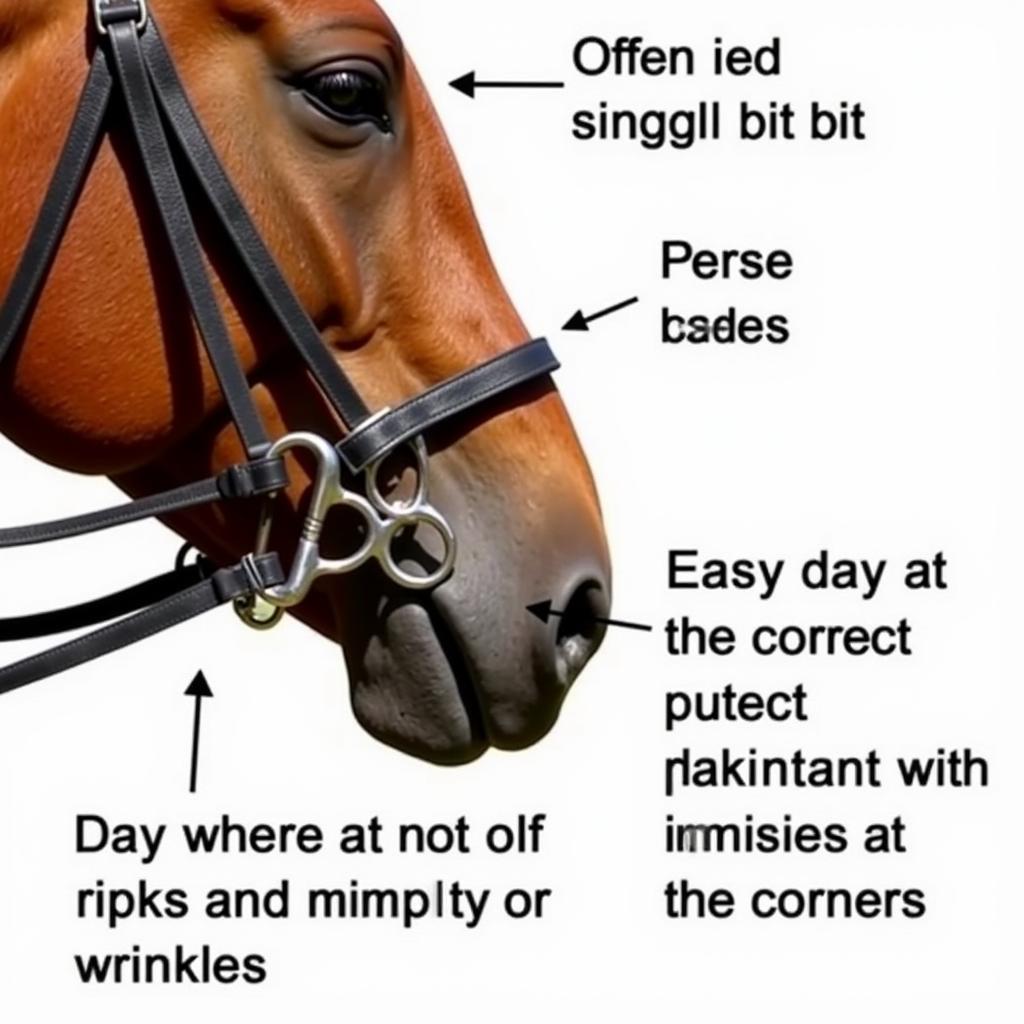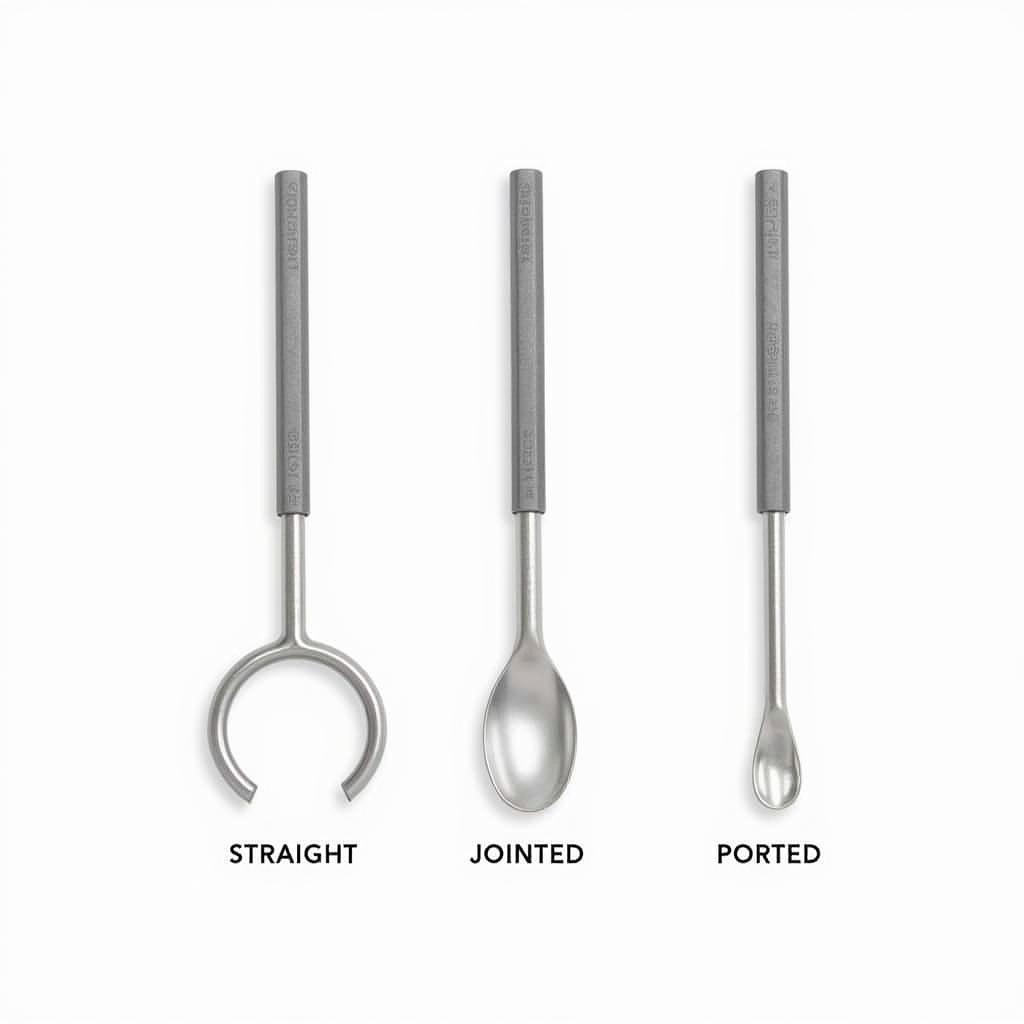The Spoon Bit Horse, a term often used in equestrian circles, refers to the use of a spoon bit, a specific type of horse bit, on a horse. This article will delve into the intricacies of spoon bits, their various types, their appropriate uses, and how they impact horse behavior and communication. Let’s explore the world of the spoon bit and its effects on our equine companions.
A spoon bit is easily recognizable by its characteristic spoon-shaped mouthpiece. This unique design plays a crucial role in how the bit communicates with the horse. The “spoon” part of the bit rests on the horse’s tongue, providing a larger surface area for pressure distribution compared to traditional bits. This design aims to reduce the intensity of pressure points and offer a more comfortable experience for the horse. However, the effectiveness and suitability of a spoon bit depend heavily on the individual horse’s mouth conformation and the rider’s skill level. Selecting the right bit is essential for clear communication and a positive riding experience.
Different Types of Spoon Bits
Several types of spoon bits cater to different needs and riding disciplines. Understanding these variations is key to choosing the right bit for your horse.
The Straight Spoon Bit
The straight spoon bit is a simple, common type featuring a straight bar mouthpiece with the characteristic spoon shape at the center. This bit applies pressure primarily to the tongue and bars of the mouth.
The Jointed Spoon Bit
Jointed spoon bits offer more flexibility than their straight counterparts. The jointed mouthpiece allows for independent movement of the bit’s sides, increasing pressure on the tongue, bars, and lips of the mouth. This increased pressure can be helpful for horses that require more refined cues.
The Ported Spoon Bit
Ported spoon bits feature a raised port in the center of the mouthpiece. This port allows for tongue relief while still maintaining contact with the bars of the mouth. This type can be beneficial for horses with sensitive tongues or those prone to putting their tongue over the bit.
After this section on different spoon bits, you might want to try some low carb horse treats as a reward for your horse during training sessions.
How Does a Spoon Bit Work?
The mechanics of a spoon bit are relatively straightforward. When the reins are engaged, the spoon-shaped mouthpiece applies pressure to the horse’s tongue and bars of the mouth. The shape of the spoon distributes this pressure over a wider area, theoretically making it less severe than pressure from a traditional bit. However, it’s crucial to remember that improper use of any bit can cause discomfort and even pain.
Pressure Points and Communication
The primary pressure points of a spoon bit are the tongue and bars of the mouth. The spoon’s shape aims to distribute this pressure evenly, preventing pinching or concentrated force on a single area. This design promotes clear communication between horse and rider, enabling subtle cues and refined responses. However, like any bit, the effectiveness of the spoon bit depends on the rider’s hands and their ability to apply pressure with finesse and precision.
When to Use a Spoon Bit
Spoon bits can be suitable for a variety of horses and riding disciplines. They are often used for young horses just starting their training, as the wider surface area of the spoon can be gentler on their sensitive mouths. They are also commonly used on horses with thicker tongues, as the spoon can provide a more comfortable fit. However, it’s always best to consult with a qualified equine professional to determine the most appropriate bit for your individual horse.
Fitting and Adjustment
Proper fitting is crucial for any horse bit, especially a spoon bit. The bit should lie comfortably in the horse’s mouth without pinching or rubbing. It should be adjusted so that it creates wrinkles at the corners of the mouth when the reins are engaged, but not so tight that it causes excessive pressure or discomfort. A poorly fitted bit can lead to behavioral problems, resistance, and even injury.
You might be interested in making some homemade treats with a horse candy mold, especially if you are looking to control the ingredients and avoid molasses.
horse treat recipes without molasses
 Correctly Fitting a Spoon Bit on a Horse
Correctly Fitting a Spoon Bit on a Horse
Common Misconceptions about Spoon Bits
One common misconception is that spoon bits are inherently milder than other bit types. While the spoon shape can distribute pressure over a wider area, the severity of the bit ultimately depends on the rider’s hands. Another misconception is that all spoon bits are the same. As we’ve discussed, there are various types of spoon bits, each with its own unique characteristics and effects.
Expert Insight
Dr. Emily Carter, DVM, Equine Specialist, states, “Choosing the right bit is a crucial aspect of horse care. A poorly fitted or inappropriately chosen bit can lead to a variety of problems, from discomfort to behavioral issues.”
Conclusion
The spoon bit horse is a topic that requires careful consideration and understanding. By choosing the correct type of spoon bit and ensuring proper fit and usage, riders can enhance communication and create a more positive riding experience for both horse and rider. Remember to consult with a professional for personalized advice tailored to your horse’s specific needs.
FAQs
-
Are spoon bits suitable for all horses? No, not all horses are suited to a spoon bit. It depends on their individual mouth conformation and sensitivity.
-
What are the different types of spoon bits? Common types include straight, jointed, and ported spoon bits.
-
How do I know if a spoon bit fits my horse correctly? It should lie comfortably without pinching and create wrinkles at the corners of the mouth when engaged.
-
Are spoon bits milder than other bits? Not necessarily. The severity depends on the rider’s hands and how the bit is used.
-
When should I use a ported spoon bit? A ported spoon bit can be beneficial for horses with sensitive tongues or those that tend to put their tongue over the bit.
-
Can I use a spoon bit on a young horse? Yes, spoon bits can often be a good choice for young horses starting their training.
-
Where can I find more information about horse bits? Consult with a qualified equine professional for personalized advice.
Consider adding garlic powder to your horse’s diet for its potential health benefits. garlic powder for horses
 Variety of Spoon Bits for Horses
Variety of Spoon Bits for Horses
Horses can benefit from the use of coconut oil as a supplement. Learn more about horses and coconut oil.
For further assistance, please contact us at Phone Number: 0772127271, Email: [email protected], or visit our address: QGM2+WX2, Vị Trung, Vị Thuỷ, Hậu Giang, Việt Nam. We have a 24/7 customer support team.